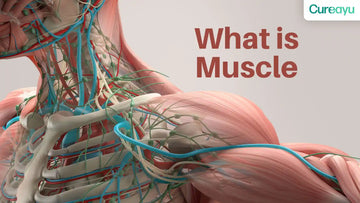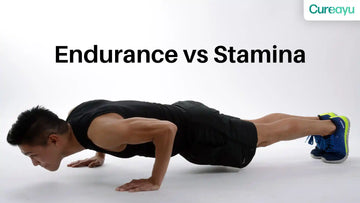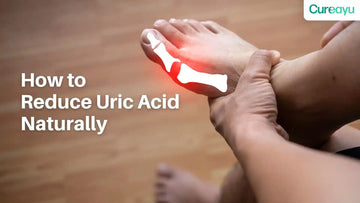When you hear the word "muscle," what comes to mind? Perhaps, you envision a heavily-built bodybuilder flexing bulging biceps, or maybe the subtle, intricate movements of a ballet dancer. However, muscles are far more fascinating and essential than their glamorous interpretations suggest. These complex tissues power every move you make, playing vital roles in overall health and wellbeing.
This blog dives deep into the world of muscles, illuminating their structure, function, and importance in your body. By shedding light on various types of muscles and their unique characteristics, we aim to provide a comprehensive understanding. We will also discuss potential complications related to muscles and how to develop them through exercise, ultimately appreciating the marvel that is muscle.
Also Read: Can We Build Muscle Without Protein? Understanding The Role of Protein in Muscle Building
What Is Muscle
Muscles are soft tissues composed of fibers that contract and produce movement or maintain the position of body parts. They are vital for nearly every function in the human body—from enabling physical movement and supporting essential bodily functions to impacting various aspects of health and fitness. Muscles stem from muscle cells—otherwise known as muscle fibers—which generate force and facilitate motion.
Muscle fibers are unique because they can contract (shorten) and extend (lengthen). When muscles contract, they pull on bones and help in motion or maintaining posture. This force generation is essential for walking, running, sitting, standing, and virtually every action in your daily life. Moreover, muscles play an indispensable role in metabolic health, assisting in energy expenditure and overall strength.
Types of Muscle
Skeletal Muscles
Skeletal muscles are the most commonly recognized type of muscles, primarily because they are under voluntary control. These muscles attach to bones via tendons and are responsible for executing movements when instructed by the nervous system. With their cylindrical shape and multiple nuclei, they are easily distinguishable.
Skeletal muscles account for nearly 40% of a person's body mass, playing a dominant role in the physical appearance and strength of an individual. They enable actions such as walking, lifting objects, and maintaining posture. Because they function under voluntary control, skeletal muscles are highly adaptive to training, allowing individuals to enhance their strength and endurance through exercises.
Striated Muscles
While striated muscles can refer to both skeletal and cardiac muscles, they are unique due to their striped appearance under a microscope—a result of the arrangement of actin and myosin filaments. These muscles are specialized to generate powerful and precise contractions.
Cardiac muscles, a subtype of striated muscles, function involuntarily and are found exclusively in the heart. Their design allows them to contract continuously and rhythmically, sustaining the vital function of pumping blood throughout the body. Unlike other muscle types, cardiac muscles have a rich supply of blood vessels and a high density of mitochondria, which is necessary to meet their enduring energy demands.
Smooth Muscles
Smooth muscles are found in various internal organs, including the stomach, intestines, blood vessels, and the bladder. Unlike skeletal and striated muscles, smooth muscles are not under voluntary control and do not display striations, hence their name.
These muscles play critical roles in body functions such as regulating blood flow, aiding digestion, and controlling the expulsion of urine. Their contractions are slow and sustained, helping maintain vital bodily functions that do not require conscious thought. Smooth muscles' efficiency and endurance are impressive, managing large workloads typically unnoticed by the conscious mind.
Also Read: Muscle Fatigue Uncovered: Signs, Causes, and Powerful Remedies
Importance of Muscle
Movement and Mobility
Muscles enable us to move and perform various activities—whether it's walking, running, or lifting objects. This ability is due to the coordinated contractions and relaxations of muscles, which pull on bones and create movement.
Posture and Stability
Good posture is crucial for avoiding musculoskeletal problems. Muscles help maintain proper body alignment and stability, ensuring we can sit, stand, and move correctly.
Metabolic Health
Muscle tissues aid in energy expenditure and metabolism. They help manage blood sugar levels and support weight management, positively affecting overall metabolic health.
Respiratory and Cardiovascular Support
Muscles in the respiratory system, such as the diaphragm, play a key role in breathing. Cardiac muscles are indispensable for maintaining heart function and blood circulation.
Protection of Internal Organs
Certain muscles form protective walls around vital organs, acting as barriers against physical trauma and contributing to structural integrity.
What Can Be the Complications With Muscle
Muscle Strains
Muscle strains occur when fibers in a muscle overstretch or tear, often due to excessive force or overuse. Symptoms include pain, swelling, and limited range of motion. Treatment typically involves rest, ice, compression, and elevation (RICE).
Muscle Cramps
Muscle cramps are sudden, involuntary contractions that can cause intense pain. These can result from dehydration, electrolyte imbalances, or overextraction. Stretching and rehydration can mitigate these symptoms.
Muscle Atrophy
Atrophy refers to the wasting away of muscle tissue, leading to weakness and a lack of function. It can result from disuse, illness, or aging, emphasizing the need for regular exercise to maintain muscle mass.
Muscular Dystrophy
Muscular dystrophy is a group of genetic disorders characterized by progressive muscle weakness and degeneration. These conditions often require medical intervention and can significantly affect the quality of life.
Also Read: What Is Muscle Cramp: Causes, Symptoms, Risks, and Prevention
How to Develop Muscles Through Exercise
Resistance Training
Resistance training involves exercises that make your muscles work against a weight or force, such as weightlifting. This form of exercise helps increase muscle mass, strength, and endurance by causing microscopic damage to muscle fibers, which then repair and grow back stronger.
Aerobic Exercise
Aerobic exercises like running, cycling, and swimming improve cardiovascular health but also support muscle endurance. These exercises increase blood flow to muscles and help in the more efficient use of oxygen.
Flexibility Exercises
Flexibility exercises, including stretching and yoga, improve the range of motion of muscles and joints. They help prevent injuries, reduce muscle stiffness, and aid in better overall performance.
High-Intensity Interval Training (HIIT)
HIIT involves short bursts of intense exercise followed by rest or low-intensity periods. This type of training can build muscle while improving cardiovascular fitness, making it a highly effective method for muscle development.
Also Read: The Amount of Muscle Mass Needed to Develop and Preserve Strength
Final Words
Understanding the importance and complexity of muscles is essential for appreciating the integral role they play in our lives. From enabling movement and posture to supporting vital bodily functions and contributing to overall health, muscles are undeniably one of the most significant tissues in the human body.
Investing time in developing muscle health through proper exercise routines, nutrition, and lifestyle choices can yield immense benefits. This knowledge empowers us to take proactive steps towards building stronger, more resilient bodies and live healthier, more fulfilling lives. Embrace the fascinating world of muscles and unlock your body's potential.








